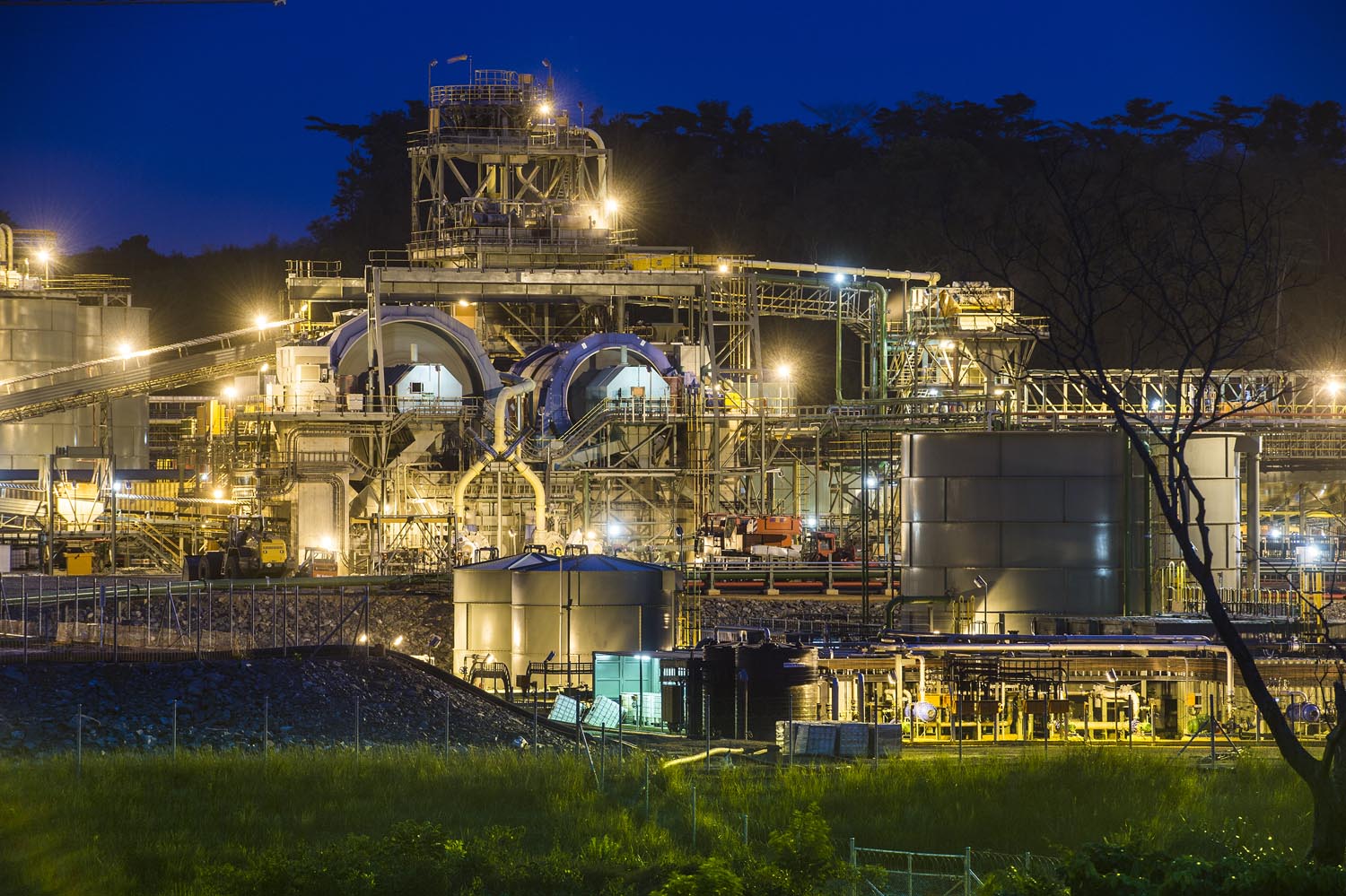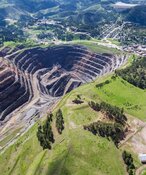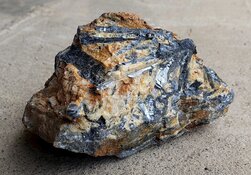The Gold Report: Thanks for joining us today. Last week Asanko Gold Inc. (AKG:NYSE.MKT; AKG:TSX) released a definitive feasibility study on its expansion projects for the Asanko gold mine in Ghana. Can you tell us some of the highlights?
Peter Breese: The study is what I would term very robust. It demonstrates we have a clear growth plan for the Asanko Gold Mine from its current production level of around 230,000–240,000 ounces a year of gold to 450,000 ounces at steady state production. What I see as quite important is not only do we have a lot of flexibility on how we can best implement this plan, it's also a low-cost, long-life asset, and it's in Ghana, which is one of the best mining jurisdictions in Africa.
The expansion will be done in two stages, Project 5 Million and Project 10 Million. The combined capital for both projects is around $350 million, generates a 12.5-year life of mine with an after-tax internal rate of return in excess of 20% at very competitive, all-in sustaining cash costs (AISCs), which bodes well for our ability to generate cash in all cycles. Project 10 Million generates cash from operations of around $130 million a year.
TGR: Would you tell us what Project 5 Million and Project 10 Million look like?
PB: Project 5 Million is a very capital-efficient growth project. Essentially it optimizes the throughput capacity around what we call the process bottleneck, which is the milling circuit. It takes the milling circuit from current operations of about 3.6 million tons per annum (3.6 Mtpa) to 5 Mtpa. This will cost just over $20 million and involves upgrading simple things like pumps, tailings lines and gold recovery processes. We have started work on that and expect the project to be complete before the end of this year.
TGR: What kind of production would you be expecting to get from Project 5 Million by the end of the year?
PB: Project 5 Million maintains our production profile at current rates of 230,000–240,000 ounces for about 20 to 21 years. If we didn't invest in Project 5 Million, we would see a gradual decline in production in the coming years. It's a very low-capital entry project, with payback in just over a quarter.
The second part of that project is the installation of an overland conveyor linking our largest deposit, Esaase, to our existing processing operations. The overland conveyor facilitates the opening up of the Esaase pit and this is what gives us the 21-year life of mine.
TGR: How long is this conveyor going to be?
PB: The conveyor is 27 kilometers long and has been designed to ultimately handle Project 10 Million. In the first instance, when we first open up Esaase and the processing facility is running at 5 Mtpa, the conveyor will only be transporting about 2 Mtpa of ore. But once Project 10 Million comes in, the conveyor can ramp up to 8 Mtpa.
TGR: Can you tell us about Project 10 Million?
PB: Project 10 Million leverages off the infrastructure already in place at the Asanko Gold Mine. We've designed Project 5 Million and the conveyor on a modular basis. In Project 10 Million, we build a second 5 Mtpa carbon-in-leach plant right next to the existing processing facility, which is upgraded to 5 Mtpa in Project 5 Million. That will give us 10 Mtpa in processing capacity. We'll then start mining the Esaase deposit at higher rates as it will be the main ore source, taking it up to 7–8 Mtpa
TGR: The modularity of this project appears to give you a good bit of flexibility. Could you talk about what factors you see playing into the timing of development?
PB: In the mining industry, flexibility is key. The great thing about Asanko is Project 5 Million is imminently capable of sustaining itself for over 20 years, generating around $80 million a year in cash from operations.
Project 10 Million really boosts our production and propels us into one of the largest gold mines in Africa at 450,000 ounces/year. It's easily within the Top 10 gold mines in Africa, which by world standards is very good, and with a mine life of over 12 years. Essentially Project 10 Million maximizes production over a shorter life of mine.
The reason for the modular design is that, for a junior company such as us, we need to be able to fund our growth projects and the strength of our balance sheet is a critical factor. As I've said before to many shareholders, I have an allergy to too much debt and an allergy to too much dilution through equity raisings. While there are requirements for both in the business, they must be kept to a sustainable level and mustn't destroy shareholder value.
The great thing about the modular design is they're all standalone projects in their own right and they can be switched on at any time in the future. It's all around prudent balance sheet management: How do we manage our balance sheet and how do we make sure that we don't get to a situation where our cash balances fall to a precarious level? Right now, forecasts are telling us that by the end of this year, we'll have in excess of $80 million in the bank, and by the middle of next year, 2018, we'll have about $100 million in the bank. This puts us in a very comfortable position to then decide the best way to grow going forward.
TGR: Beyond Project 10 Million, what other opportunities for growth exist at Asanko?
PB: We have a huge amount of exploration potential and hold one of the largest land packages in Ghana on the Asankrangwa Gold Belt. All the other majors in Ghana— such as Gold Fields Ltd. (GFI:NYSE), Newmont Mining Corp. (NEM:NYSE), AngloGold Ashanti Ltd. (AU:NYSE; ANG:JSE; AGG:ASX; AGD:LSE) and Kinross Gold Corp. (K:TSX; KGC:NYSE)—are all on the other two major gold belts, both the Sefwi Belt and the Ashanti Gold Belt.
Asanko is on the Asankrangwa Gold Belt, and we're the only miner there. We've done extensive studies on the prospect of the Sefwi Belt. Historically there's been very little sophisticated exploration techniques applied to this belt. So, we've upped the ante on that. And right now, we're in the process of completing a three-dimensional inversion study and that is coming up with a number of high-priority targets.
Instead of going to buy anything else right now, we've decided to look in our backyard and see what else we can find. Last year, with little effort and a very cost-effective budget, we found 300,000 ounces. If you look at the quality of the two assets that we have right now with over 5 million ounces of reserves, the chance of adding more to that is very good.
TGR: Management is important to investors. Can you tell us about the experience of Asanko's managers?
PB: We have a core group of people who have been together for between about 8 and 32 years. We've built eight large-scale mines together in Africa, and prior to that, many of us worked in the big mining companies in Africa. Our skill set covers the entire technical and financial range, as well as human resources. It's important to remember that building a mine or finding a large deposit or doing a feasibility study is not just about a technical solution. It's also about people, local communities, having a social license to operate, and we pay a lot of attention to that as well.
Members of the management team at Asanko are also owners. Along with Directors, we own just under 3% of the company, which is important. In fact, the Chairman and I bought shares last July in the market and we have never sold a share.
The core executive management team at Asanko has combined mining development and operational experience in excess of 250 years, which is extraordinary for a junior company of this size, and I think the fact that we built the Asanko Gold Mine ahead of schedule and under budget is a testament to the team.
TGR: Would you talk more about how you anticipate funding the capex for the project?
PB: Currently, we have just over $60 million cash in the bank. This year we anticipate making around $80 million. If you take our capex for the year, that means we'll get to the end of the year with between $80 million and $95 million in cash. We then continue to generate between $80 million and $90 million a year. We will get to the middle of next year with in excess of $100 million.
That $100 million then facilitates the next phase, which is building the conveyor belt, which costs about $80 million. Once we've built the conveyor belt, each one of those steps continues to drive more value, drive higher production and, therefore, more free cash flow. And so, it's about maintaining our cash flow margin on a per-ounce basis that generates that cash. We are very comfortable from a cash-in-bank and a cash flow-generating capacity because that's what we're doing every day right now. We're producing the ounces and generating the cash.
TGR: What's your guidance for this year?
PB: Our guidance for this year is 230,000–240,000 ounces gold, and as a goal, AISC of $880–920 per ounce. We expect it to be maintained at that level for another two to three years while we develop the next phase of projects. Thereafter, it goes gradually up to about 450,000 ounces/year, and we see a big drop in AISC then because this is a volume game, so fixed overhead gets spread over higher production. So, we'll see our AISC drop to $870–880 per ounce at 450,000 ounces.
TGR: Are there other points that you would like our readers to know?
PB: There are a couple of key pillars to this organization. First, we have a team that's been there and built mines many times before, and I think it's borne out by our first year of operations. To deliver a project ahead of schedule and under budget is extraordinary in this day and age.
Second, when we switched production on, we planned to ramp it up to steady state in six months, and we got there in three months. Now we're running within the first three quarters of switching on the mine at 20% above design capacity. We see no reason why we can't replicate the same process. Right now, the steps are more deliberate and a little bit slower. The reason for that is we already have debt and we don't believe that we should be issuing equity. We don't have to grow just for growth's sake. It's about growing in a responsible manner and adding value to shareholders. Over the past week, I’ve been meeting many of our key shareholders and analysts and they have been very supportive.
If you take our current valuation right now, we're trading at just under three times future cash flow. And if you take our peers, they're trading between 8 and 12 times cash flow. We think that if we continue producing the ounces and delivering the cash flow, the market will soon see that there's a rerating about to come.
TGR: Thanks for your insights, Peter.
Peter Breese is President, CEO and Director of Asanko Gold Inc. Breese has over 25 years of operational experience in the global mining industry, predominantly in southern Africa and Australia. Prior to joining Asanko, he was CEO of Mantra Resources, before its US$1 billion acquisition by ARMZ in 2011 and Chief Executive of Norilsk International, following its acquisition of LionOre Mining in 2007, where he was COO.
Read what other experts are saying about:
Want to read more Gold Report interviews and articles like this? Sign up for our free e-newsletter, and you'll learn when new articles have been published. To see a list of recent articles and interviews with industry analysts and commentators, visit our Streetwise Interviews page.
Disclosure:
1) Patrice Fusillo conducted this interview for Streetwise Reports LLC and provides services to Streetwise Reports as an employee. She owns, or her family owns, shares of the following companies mentioned in this interview: None. She is, or members of her immediate household or family are, paid by the following companies mentioned in this article: None.
2) Asanko Gold Inc. is a sponsor of Streetwise Reports. Streetwise Reports does not accept stock in exchange for its services. Click here for important disclaimers. The information provided above is for informational purposes only and is not a recommendation to buy or sell any security.
3) Asanko Gold Inc. had final approval of the content and is wholly responsible for the validity of the statements. Opinions expressed are the opinions of Peter Breese and not of Streetwise Reports or its officers.
4) Peter Breese: I was not paid by Streetwise Reports to participate in this interview. I had the opportunity to review the interview for accuracy as of the date of the interview and am responsible for the content of the interview. I own shares of the following companies mentioned in this interview: Asanko Gold Inc.
5) Interviews are edited for clarity. Streetwise Reports does not make editorial comments or change experts' statements without their consent.
6) This interview does not constitute investment advice. Each reader is encouraged to consult with his or her individual financial professional and any action a reader takes as a result of information presented here is his or her own responsibility. By opening this page, each reader accepts and agrees to Streetwise Reports' terms of use and full legal disclaimer. This article is not a solicitation for investment. Streetwise Reports does not render general or specific investment advice and the information on Streetwise Reports should not be considered a recommendation to buy or sell any security. Streetwise Reports does not endorse or recommend the business, products, services or securities of any company mentioned on Streetwise Reports.
7) From time to time, Streetwise Reports LLC and its directors, officers, employees or members of their families, as well as persons interviewed for articles and interviews on the site, may have a long or short position in securities mentioned. Directors, officers, employees or members of their immediate families are prohibited from making purchases and/or sales of those securities in the open market or otherwise from the time of the interview or the decision to write an article, until one week after the publication of the interview or article.




































